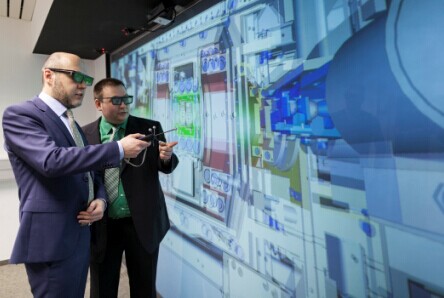Schaeffler and the University of Erlangen-Nuremberg develop high-performance test stand
Published on:14 Mar,2016
Schaeffler and the Friedrich-Alexander University of Erlangen-Nuremberg (FAU) have developed a new rolling bearing spin test stand as part of a collaborative research project. Bearings are exposed to 3000 times gravitational acceleration on the test stand and tested under the resulting high loads. Very little research has been conducted so far into the friction behavior of rolling bearings under high centrifugal forces such as those generated on the rolling bearing spin test stand. The results of the research project will be used to optimize current rolling bearing technology with the aim of cutting fuel and energy consumption in vehicles and machines.
A heavyweight among test stands
The test stand, which is located in its own 22 square meter test bunker and weighs 16 tons, took three years to design and build with 900 technical drawings, 1600 screws and one kilometer of cable. “The rolling bearing spin test stand has been one of the largest projects ever carried out at the Chair and it is a perfect example of some excellent cooperation between industry and universities in the field of fundamental rolling bearing research”, emphasizes Prof. Dr.-Ing. Sandro Wartzack, head of the Chair for Engineering Design.
The bearings rotate twice during testing. Thanks to an open planetary gear, they each rotate around their own axis and all of them together rotate around a central axis. In particular, the question of which factors such as temperature, coatings or geometric details influence the bearings under extreme loads can be investigated on the new test stand.
Improved simulation tools
In conjunction with the FAU, Schaeffler also improved and further developed the software required for the simulation process with which it is possible to simulate the behavior of the rolling bearings even before a prototype is built by enabling optimizations to be made to the computer model. “With this test stand, we can now gain a better understanding of the phenomena associated with rolling bearings in the centrifugal force field. In this context, it is important for us to refine our simulation tools for rolling bearings based on the test results. This will help us to transfer the findings into application-oriented conditions and further improve our product development”, states Oliver Graf-Goller from Bearings & Components Development and project manager at Schaeffler with regard to the test stand’s importance.
The last round of tests and adjustments are now being carried out. The first measurements are planned for October and will thus improve simulations and ensure new bearing prototypes can be tested more quickly.